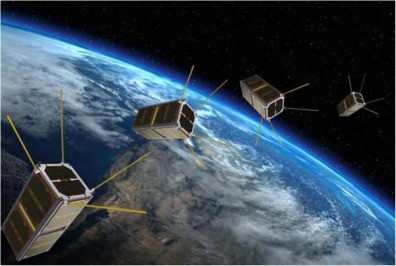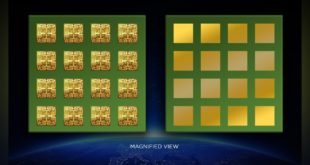RADAR offers special advantages with respect to other types of sensors including all-day, all-weather operations, long detection distance and, depending on the frequency used, penetration. Moreover, radar can often be carried by a number of platforms, spanning from classic naval and airborne to more recent space-borne, UAVs, such as drones, and high-altitude platforms (HAPs). The ensemble of these characteristics can be exploited for military scenarios, such as target detection, tracking and recognition, and for civil scenarios, such as land use and classification, disaster assessment, urban and non-urban monitoring, making radar the perfect sensor for dual-use applications.
Radar’s possibilities are very broad and cover different fields like long- and short-range air- and ground surveillance, target detection, target recognition and classification, weapon guidance, etc. These applications demand for diverse radar capabilities, leading today to the multiplication of highly specialized radar systems and antennas on the same platform (aircraft, ship, or other). Furthermore, new platforms are also equipped with a growing number of other RF sensors, such as electronic counter-measure (ECM) systems, electronic support measure systems (ESM), communication systems, and navigations systems.
At the other hand, the place and weight available on any platform is limited, especially on unmanned aerial vehicles
(UAV). In order to accommodate these contradicting constraints, future radars will thus have to present multifunction capabilities. They should of course also achieve an increased accuracy, at a reduced price. A new concept called ”software-defined radar” might bring an answer to these needs.
Software-defined radar (SDR) is a multi-purpose radar system where most of the processing like signal generation, filtering, up-and-down conversion, etc. is performed by software. In many military operations radar, with its ”day and night” and ”all-weather” capabilities, is a most valuable, even indispensable sensor. Traditionally, a radar system is built using dedicated hardware, such as ASIC circuits. Such hardware is tailored to the task to be achieved and offers little or no reconfigurability.
A software-defined radar is a versatile radar system, where most of the processing, like signal generation, filtering, up-and down conversion, etc. is performed by software. The software-defined approach provides not only to a clear cost reduction but also to a significant increase in the versatility of the system, since signal generation and signal processing parameters may be easily adapted on the fly to the task under consideration. This software can be easily adapted, what gives software-defined radars other advantages such as the possibility to re-use the same hardware; an easier implementation of advanced signal processing algorithms; and faster development and reduced price.
A software-defined radar applies the same principles as software-defined radio: components that have implemented in hardware (e.g. mixers, filters, demodulators, detectors etc.) are implemented on a computer or other programmable device, usually a programmable gate array (FPGA). This kind of implementation has been made possible recently thanks to the huge progress made in the computational power of programmable devices and computers. The basic design concept of a receiving and module consists of a wideband RF front end, up-converter and down-converter, an AD/DA converter, an FPGA, and a computer. Two variants exist, either most of the processing takes place on the FPGA and the computer only controls the radar and display. Secondly, most of the processing takes place on the computer and the FPGA only performs some basic operations such as decimation.
A field-programmable gate array (FPGA) grated circuit is designed to be configured after manufacturing and is hence ”field-programmable”. The FPGA design is is generally specified using a hardware description language (HDL) such as VHDL and Verilog. FPGAs contain programmable logic components called ”logic blocks”, the hierarchy of reconfigurable interconnects that allowed them to be ”wired together”. In most FPGAs, the logic blocks include memory elements.
If the radar is equipped with a wideband fully digital phased array antenna, where digitization of the antenna signals on transmission and reception occurs at the antenna element level, the possibilities become incredibly vast. Some of the applications that an airborne software-defined radar equipped with such an antenna could perform include:
• Ground Moving Target Indication; • SAR; • Inverse SAR;
• Communication, navigation and identification systems: Satellite Communications (SatCom), Tactical Air Navigation (TACAN), Radar Altimeter, Identification Friend or Foe (IFF),…
• Electronic Countermeasures (ECM) and Electronic Support Measures (ESM) systems;
• Weather radar;
• Weapon location for the detection and tracking of artillery shells;
• For a UAV: sense and avoid sensor that detects other flying objects to take evasive actions.
Software Defined Radar Market
The airborne radars market is projected to grow from USD 4.1 billion in 2020 to USD 6.0 billion by 2025, at a CAGR of 8.0% from 2020 to 2025. The market is driven by factors such as the rising demand for phased array radars for better operational efficiency during air surveillance, border surveillance, and commercial applications.
The airborne radars market includes major players Lockheed Martin Corporation (US), Northrop Grumman Corporation (US), Thales Group (France), Hensoldt AG (Germany), Leonardo SPA (Italy), BAE Systems (UK), Israel Aerospace Industries (Israel), Saab AB (Sweden), Aselsan (Turkey), Elbit Systems (Israel) and L3Harris Technologies (US. These players have spread their business across various countries includes North America, Europe, Asia Pacific, Middle East & Africa and Latin America. COVID-19 has impacted their businesses as well.
Software-defined radars implementations
Examples of multipurpose software-defined radars include the ARS-800-2 Reconfigurable Maritime Patrol Radar and the Multi Purpose RF System Demonstrator. The ARS-800-2 Reconfigurable Maritime Patrol Radar pre- sented in is an airborne software-defined radar that can switch between different modes during the flight. For each mode, the appropriate algorithm is loaded on a FPGA by means of a PC. The currently available modes are: • Real-time unfocused SAR; • Real-time oil slicks and pollution detection (using SAR); • Real-time representation of AIS (Automatic Identification System) targets.
Sandia Researchers developing software-defined radar called Multi-Mission Radio Frequency Architecture
Now, Sandia is giving radar a major digital makeover. Researchers are working to replace legacy analog radars commonly used by the military with a new, digital, software-defined system called Multi-Mission Radio Frequency Architecture. The overhauled design promises U.S. warfighters unprecedented flexibility and performance during intelligence, surveillance and reconnaissance operations, even against sophisticated adversaries. Kurt said prototype designs are currently being flight-tested using testbed radar systems on a Twin Otter turboprop aircraft, and the technology could be ready to field in the next two years.
Distinguished member of the technical staff Jacques Loui is leading Sandia’s technical team. He said the project, initially funded by Sandia’s Laboratory Directed Research and Development program and now being propelled forward by the DOD, was motivated by a desire to supply operational agility that warfighters currently don’t have with analog systems. “Agility means the ability for the sensor to be chameleon-like and adapt to the needs of the mission,” Jacques said. “We want to be aware of where we are, where our friends and foes are, and we want to be able to operate unimpeded in contested environments.”
Like a many-colored lizard, Sandia’s digital radar can be reconfigured for different functions, like communication, navigation and electronic warfare, reducing the need for additional hardware. Users will be able to download the tools they need for each mission as firmware and software onto equipment about the size of a small toolbox. “We are replacing legacy, analog-based signal processing hardware with state-of-the-art, digitally based signal processing firmware and software,” Jacques said.
5G technology improves radar performance
“Digital, software-based radar systems do exist on small scales,” Jacques said, but his team is using advanced electronic components developed for 5G cellphone systems to reap major advantages in performance and agility over similar technologies. “Our aim is to deliver outstanding sensors to our customers in the most efficient manner possible.”
5G cellular technology increases the amount of information wireless technologies can transmit and receive. Sandia is using it to create digital processing tools that convert massive amounts of analog data to digital signals and vice versa, such as a digital version of synthetic aperture radar, a remote radio frequency imaging technology widely used for many national security missions.
Kurt said Sandia radars require extreme high performance. Now, technology is finally at a point where the lab can make the switch from analog to digital and preserve the extreme fidelity.
Advanced wireless technology also enables the new digital architecture to operate multiple radio-frequency channels simultaneously, either working together on a single function or working independently on several different functions.
Performance is expected to keep on improving. “The use of commercially available electronics is driving down the cost of these sophisticated systems, providing a clear path of upgrades as the technology continues to advance,” said Steven Castillo, recently retired Sandia senior manager who worked with the project. “The new architecture also sets the stage for utilizing new, highly agile antennas of the future.”
Jacques is also leading the Sandia development of these antennas.
Radar resists jamming“The new architecture will be harder for an adversary to jam or disrupt,” Jacques said. Someone who knows they’re being watched by a radar can deploy countermeasures that degrade the radar’s performance, Jacques explained. But Sandia’s system enables users to digitally change characteristics of their transmitted signal in real-time, making it harder to recognize. In addition, the high-performance system can be used to analyze a complex radio-frequency environment — one that has many kinds of signals, including those of an adversary.
“Signal and antenna agilities give radar operators an unprecedented amount of flexibility to alter radar operations, mitigating the effects of adversarial jamming,” Jacques said. As the new radar technology continues to mature, Sandia’s foundational digital radar architecture and cross-organizational research team is positioned to enable adoption of new generations of rapidly changing technology for increased performance while at the same time tailoring the system for an expanding array of applications. Sandia’s Multi-mission Radio Frequency Architecture provides the right tools at the right time to assist with many urgent national security problems, Kurt said.
References and Resources also include:
https://www.machinedesign.com/news/article/21247259/military-makes-the-move-to-digital-radar
https://www.researchgate.net/publication/251958935_Software_defined_RADAR_a_state_of_the_art
 International Defense Security & Technology Your trusted Source for News, Research and Analysis
International Defense Security & Technology Your trusted Source for News, Research and Analysis


